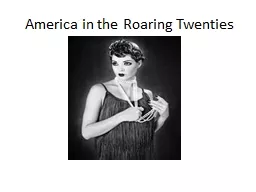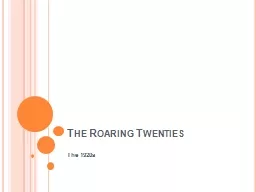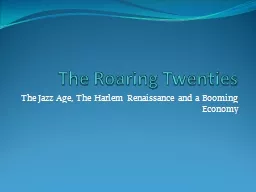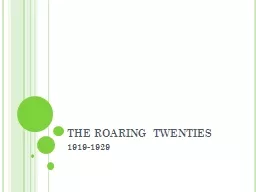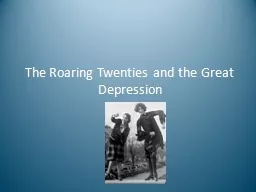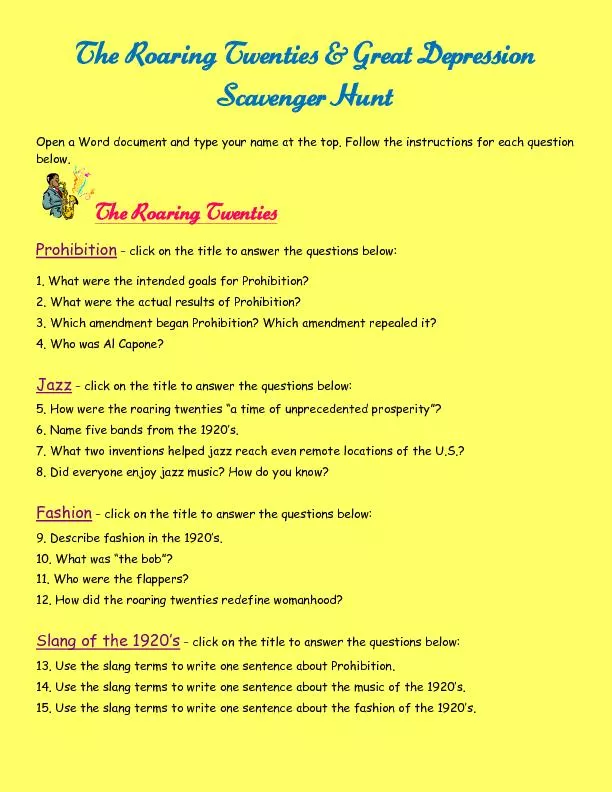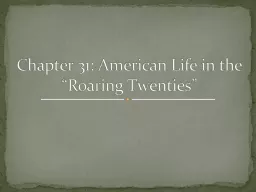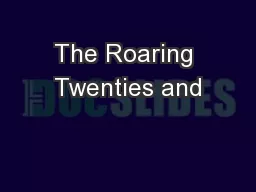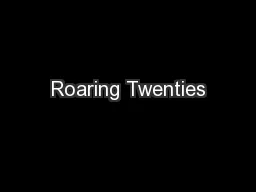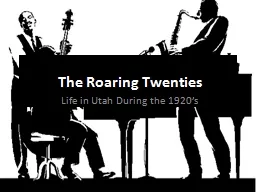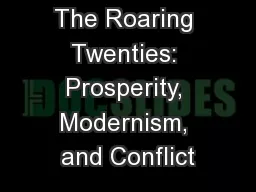PPT-America in the Roaring Twenties
Author : luanne-stotts | Published Date : 2017-05-03
Seeing Red Seeing Red Fear of Russia ran high even after the Bolshevik revolution of 1917 which spawned a communist party in America The red scare of 19191920
Presentation Embed Code
Download Presentation
Download Presentation The PPT/PDF document "America in the Roaring Twenties" is the property of its rightful owner. Permission is granted to download and print the materials on this website for personal, non-commercial use only, and to display it on your personal computer provided you do not modify the materials and that you retain all copyright notices contained in the materials. By downloading content from our website, you accept the terms of this agreement.
America in the Roaring Twenties: Transcript
Download Rules Of Document
"America in the Roaring Twenties"The content belongs to its owner. You may download and print it for personal use, without modification, and keep all copyright notices. By downloading, you agree to these terms.
Related Documents

